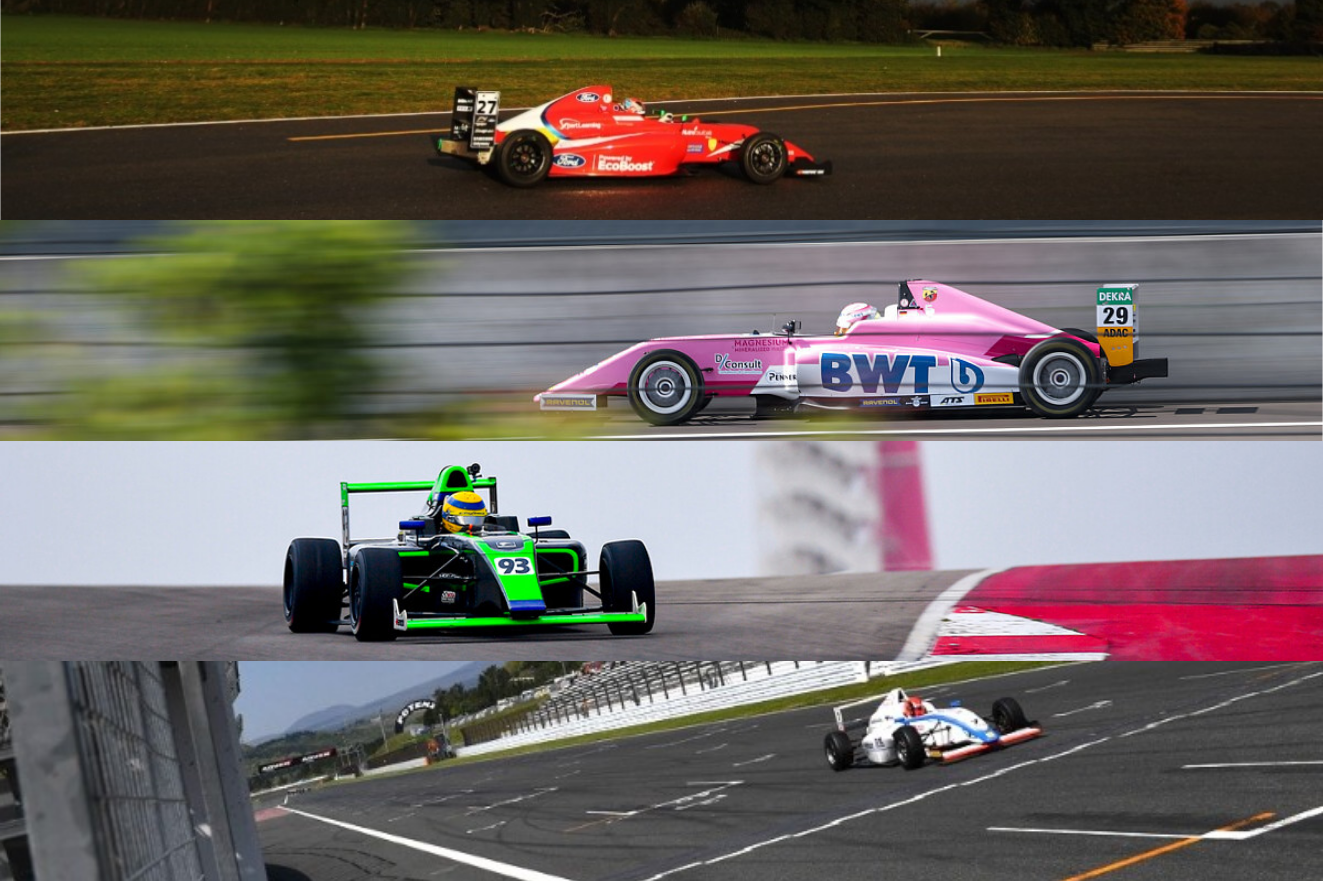 The loss of Formula Renault 2.0 as a popular route to Formula 1 means Formula 4 is now the de facto fourth tier of single-seater racing. It sits below Formula 3 in many countries, and is a modern sport success story
The loss of Formula Renault 2.0 as a popular route to Formula 1 means Formula 4 is now the de facto fourth tier of single-seater racing. It sits below Formula 3 in many countries, and is a modern sport success story
Formula 4 as a category has been around for over 25 years, but it wasn’t until 2014 that the FIA – motorsport’s global sanctioning body – decided to turn it into a standardised formula that could be used across the planet.
The long-lived Formula Ford (usually run in a wingless form with 1600cc Kent engines with grooved tyres) had only lost its legs as the most popular entry-level single-seater series a few years prior, and Formula Renault had often filled that role at the national level briefly before it joined FFord in going on a final decline.
Formula Abarth also existed in Italy, with the national championship expanding to hold rounds across Europe, and it formed the basis of Formula Panam in Mexico until the late 2010s and the Formula Masters series in China and Russia. The East Asian championship was internationally popular, but the organiser Top Speed brought it to a close at the end of 2017 so they could operate the new Asian Formula 3 Championship from 2018 onwards.
It was the Tatuus chassis builder and Abarth-branded engine that underpinned this spiritual predecessor to F4, and so it was no surprise that the all-Italian combination was the first to commit to FIA F4 in 2014, and later the second generation of cars that are planned to debut next year.
Several other chassis and engine manufacturers followed Tatuus into F4, the latter all with inline-four designs where the cylinders ran the length of the engine. There have been different capacities though, with Renault running a 2.0-litre unit in French F4, Ford providing a 1.6L EcoBoost engine to British F4 and Abarth actually the smallest at 1.4L.
That hasn’t prevented the Abarth-powered Italian championship and the German series organised by the ADAC from becoming the two biggest in Europe, and that’s because the Tatuus chassis leans more on aerodynamics than its alternatives and therefore arguably makes it better at preparing drivers for the leap up Euroformula or the FIA Formula 3 Championship.
 In fact, it’s common for drivers to race in a series with Mygale car and then move on to a Tatuus championship if they don’t start in the latter chassis. Below is a list of all of the current FIA F4 series and what car they use, as well as the latest episode of our podcast, which looks at everything F4 from its modern 2014 inception to where it’s headed next.
In fact, it’s common for drivers to race in a series with Mygale car and then move on to a Tatuus championship if they don’t start in the latter chassis. Below is a list of all of the current FIA F4 series and what car they use, as well as the latest episode of our podcast, which looks at everything F4 from its modern 2014 inception to where it’s headed next.
You can also find it on Breaker, Google Podcasts, Overcast, Pocket Casts, RadioPublic, Castbox, Apple Podcasts and Spotify.
Tatuus T4-014
Italian F4 was the first series off the ground in 2014 thanks to its FAbarth roots, and Ferrari junior Lance Stroll won the inaugural title. To emphasise that F4 was intended to be a starting place for aspiring junior single-seater racers, all drivers who had already reached adulthood were classified in a separate Italian F4 Trophy that had its own points system.
The Trophy drivers couldn’t compete to be the first ever Italian F4 champion, technically, but had it been the case then Stroll’s Prema team-mate Brandon Maisano – who was between spells in F3 – would comfortably have been champion.
Such was the popularity of the new formula the series was running to that a Winter Trophy was held in November where Prema driver Ralf Aron – now a team manager for the squad – starred with his first win before romping to the 2015 title.
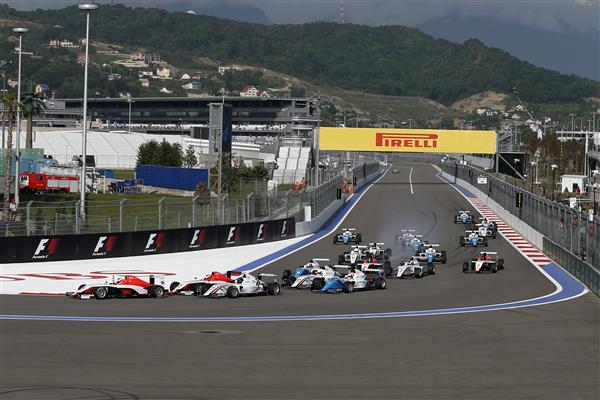
Photo: SMP F4 Championship
Germany’s ADAC series was created in 2015 and used the same car, and Aron was one of the first drivers to dabble in both series at once. He ended up with one win from his four ADAC appearances, and it set a precedent for years to come.
Helped by those doing dual programmes, both championships were oversubscribed with entries at one stage. Now, ADAC grid sizes are only modestly into double figures – but made up of the biggest teams, often contesting dual programmes – while Italian fields remain larger, appealing also to smaller teams and privateers.
The SMP-branded F4 North European Zone also kicked off in 2015 with a grid entirely run by Koiranen GP – which then held its own Winter Junior Challenge in Iberia in December which was won by Enaam Ahmed. Car-running duties in F4 NEZ were shared with MP Motorsport for 2016, with the Dutch team also one of three in the new Spanish championship.
Doubling up in NEZ/Spanish was as common as a joint ADAC/Italian programme until the NEZ story came to an end after 2018, with both Richard Verschoor and Christian Lundgaard winning double titles with MP. The non-FIA affiliated Formula Academy Finland shared a grid with F4 NEZ at Ahvenisto in 2018, and has continued to run with small grids to the present day while SMP launched a Russia-only series for 2019 that has now also ended.
At the end of 2016 the first F4 United Arab Emirates season took place, and it has become the category’s premier winter series ever since. After four rounds of the 2021 season, Xcel Motorsport’s Dutch rookie Dilano Van’t Hoff leads the way as he prepares for a campaign in Spain during the summer.
The final F4 series to feature the Tatuus car is the Austrian F4 Cup. Few cars have entered in the last two years, with Italian F4 regular Sebastian Freymuth winning in his two appearances, but F4 has had a presence in the Europe-wide series since 2015.

Photo: AFR Pokale
In that first season there were five drivers, but the overall winner was someone driving a Dallara Formulino chassis – another F4 predecessor that was popularised by ADAC Formel Masters – on dint of the individual contesting two rounds. The other four drivers contested the Red Bull Ring round, with Van Amersfoort Racing’s Harri Newey and Mick Schumacher among them.
The Formulino chassis populated the 2016 grid, and in 2017 Andreas Estner was only one of two drivers in F4 cars. To reflect the lack of F4 cars it was renamed Austrian Formula Junior for 2018, and Formula 2 team Charouz Racing System ran a car for Tom Beckhauser. Next season features races in Austria, Czechia and Italy.
Mygale M14-F4
The global expansion of F4 in 2015, after its introduction the year before in Italy, came mostly with Mygale’s car design.
British F4, then known as MSA Formula as it had yet to claim the naming rights from Jonathan Palmer’s non-FIA BRDC British F4 (which would later evolve into the non-FIA BRDC British F3), kicked off with a grid of future stars and had a brilliant title fight ended by a moment of stupidity that put F4 in headlines across the globe for the first time.
Future Formula 1, IndyCar and F2 drivers featured, and there are already four grand prix wins across various categories among the alumni, led by champion Lando Norris.
China and Mexico also launched series in the second half of 2015, with the inaugural season of both running into 2016, with NACAM F4 kicking off with a non-championship round in support of the Mexican Grand Prix, and Chinese F4 also supporting F1 in 2019. A year later it got a grand prix of its own as it became the candidate series for the Macau Grand Prix.
F4 South East Asia, a continuation of the AsiaCup series that was itself a follow-up to Formula BMW Pacific/JK Asia Racing Series and which came into existence to replace the Formula Asia series that had begun in the mid-1990s, was the next series to adopt the Mygale chassis in 2016 and did so with Renault power.

Photo: Jakob Ebrey Photography
Danish F4 and French F4 followed suit in 2017 and ’18, with the latter similar to F4 SEA in having roots stretching way before the FIA’s concept for F4. New Red Bull junior Ayumu Iwasa is the reigning French F4 champion.
French F4 had used the ‘F4’ nomenclature since 2010 as a Formula Renault 1.6-based championship, and before that had been called Formula Campus and Formul’Academy since its 1993 inception. Only when it joined the FIA regulations in 2018 did it upgrade to 2.0L power and offered Renault F1 junior status for each year’s champion. The cars are still centrally run.
In the seven years where it ran with the F4 name but without the Mygale car, the series crowned the likes of the late Anthoine Hubert, Euroformula champion Yifei Ye and Formula V8 3.5-turned-sportscar star Matthieu Vauxiviere.
In Denmark the series has been straddled alongside what used to be Danish Formula Ford, now called Formula 5, and also offered Renault-sourced prizes for its champion. Frederik Vesti and Christian Lundgaard have starred on home soil there.
After the coronavirus pandemic held back plans to race in 2020, Argentinian F4 is set to launch this year with races across South America and with the same Geely engine that Chinese F4 utilises.
Crawford F4-16
Exclusive to the United States is Crawford’s Ligier-branded design, which is now used by three different series organisers. The highest profile of these is US F4, the FIA series that began in 2016 and has two of its graduates in Indy Lights this year.
Like Italian F4, it has been able to attract huge grids as each year has gone by, with a peak of 35 starters for the 2019 season finale at Circuit of the Americas.
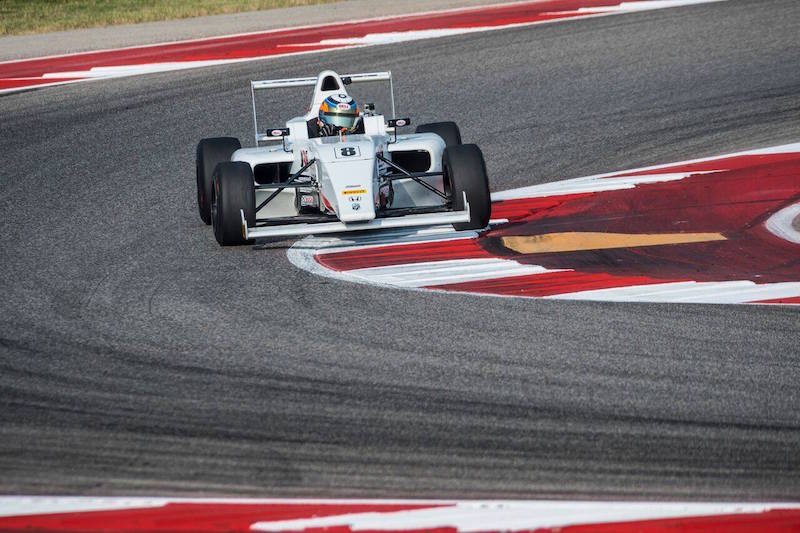 While it has raced in Canada once, all of the series’ other races have been located on circuits in the US’s eastern states. Plans to incorporate the west of the country into the 2021 calendar failed after a rise of COVID-19 cases in California.
While it has raced in Canada once, all of the series’ other races have been located on circuits in the US’s eastern states. Plans to incorporate the west of the country into the 2021 calendar failed after a rise of COVID-19 cases in California.
Formula Pro USA’s F4 Western series has remedied that somewhat, providing drivers on the western coast an opportunity to race F4 cars and also running a winter series for drivers who will then move east to contest US F4.
There were plans for a US F4 Winter Cup to take place this month, but that’s now been shelved. It’s not a huge loss though, as the Gustavo Yacaman-organised YACademy Winter Series is running on the same circuits with the same cars, teams and drivers and has already proven itself from its 2020 inception to be a great starting point for drivers headed to US F4.
Dome F110
Another nation-exclusive design, the Dome F110 has similarities to its European counterparts. Former F1 backmarker Taki Inoue claimed to Formula Scout to be behind that, but as with many of his stories, we don’t quite believe him.
Dome’s car debuted in Japanese F4 in 2015 with a 27-car grid at Okayama. By the next round that had boomed to 37 cars. The second season started with 35 cars, and once again got larger as 39 cars contested round two at Fuji Speedway. The grid size remained at at least 15 rows until round five of the 2018 season.
It was back over 30 cars by the end of that year though, stayed in the mid-30s through 2019 and even in the pandemic-hit 2020 season still attracted over 30 to each round.
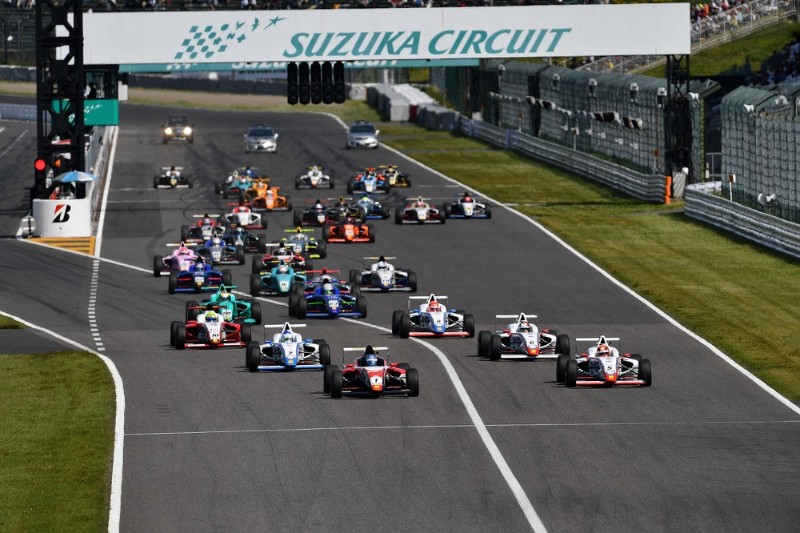 JAF Japan F4’s open formula
JAF Japan F4’s open formula
Just as Formula 3 used to be known for its wide variety of chassis and engine combinations competing together, Japan’s original F4 championship has kept that ethos alive with a grid where almost every single car is different.
Young drivers have often competed in this more aerodynamic-heavy seres in parallel with Japanese F4, with Yuki Tsunoda the most famous example as he became champion in the JAF series one year before winning the FIA title.
West Racing Cars has been one of the chassis manufacturers with a more popular presence, and has had to develop its designs year-on-year to stay ahead of its rivals. There are engines from all of Japan’s major racing manufacturers to choose from, and suspension design is another area of technical freedom that’s really unrivalled in winged junior single-seaters.
Some of the chassis designs are based on FR2.0, and now it looks like old Toyota Racing Series and F3 cars could provide inspiration for the next crop of JAF Japan F4 cars. Mechanics learn their trade just as much as drivers do here, and the development of the cars in the series means it’s probably a push to even call this one F4 anymore.
Drivers that Tsunoda joined on the list of champions include ex-F2 racers Tadasuke Makino and Nirei Fukuzumi, Super Formula race-winner Toshiki Oyu and Toyota’s 2017 Super GT champion Ryo Hirakawa.
Signatech FR1.6
As the FIA was working on its F4 concept in 2013, a similar set of plans was being thought up in South America with the same F4 name under consideration. As the year went on, talks opened between Paris and Uruguay, and eventually it was agreed F4 Sudamericana would get underway in 2014.
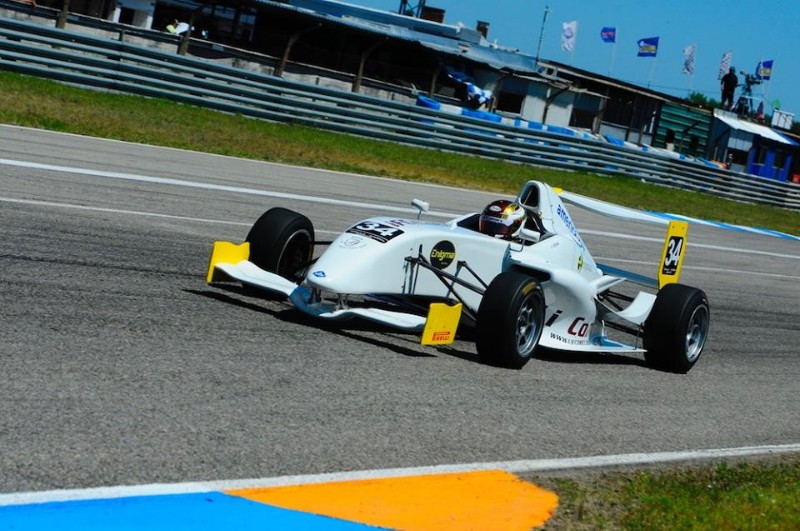 The series was essentially a successor to the Felipe Massa-linked Formula Future Fiat though, which was supposed to be aligned with FAbarth but instead utilised Signatech’s Formula Renault 1.6 chassis (best known for being the basis of French F4 until it joined the FIA’s regulations in 2018) and Fiat engines.
The series was essentially a successor to the Felipe Massa-linked Formula Future Fiat though, which was supposed to be aligned with FAbarth but instead utilised Signatech’s Formula Renault 1.6 chassis (best known for being the basis of French F4 until it joined the FIA’s regulations in 2018) and Fiat engines.
For three years F4 Sudamericana ran with small grids and races in Uruguay and Brazil, with inaugural champion Bruno Baptista going on to race in GP3 and become a winner in Stock Car Brasil and 2015 part-timer Baltazar Leguizamon becoming title runner-up in Formula Regional Americas before also switching focus away from single-seaters.
It failed to get its season off the ground in 2017, instead running tests only through the year, but relaunched in 2018 as the Brazil-based Formula Academy Sudamericana and with the same technical specifications.
Juan Vieira won the title twice in a row, before moving on to the new halo-shod F3-level Formula Delta Brazil series that is powered and supported by Mitsubishi. There were no Sudamericana races run in 2020, but it could return in 2021.
Canada’s 3/4 litres
Last year the first proper attempt to establish an FIA F4 series in Canada was proposed, but it unsurprisingly went nowhere with the pandemic lasting most of 2020.
The country has already had an F4 presence for a long time though, with the 3/4 Litre Association running its own F4 Canada championship since the 1970s.
While similar to Formula Ford 1600 in size, these motorcycle engine-powered cars run on slick tyres and have wings, and laptimes in recent years have been faster than ever at some circuits.
The F4-based and F4-named series of today
| Series name | Run since | Engine | Location | Reigning champion |
|---|---|---|---|---|
| French F4 | 1993 | Renault | France | Ayumu Iwasa |
| JAF Japan F4 | 1993 | Various | Japan | KAMIKAZE |
| Italian F4 | 2014 | Abarth | Italy + Austria | Gabriele Mini |
| FAcademy Sudamericana | 2014 | Fiat | Brazil + Uruguay | Juan Vieira |
| Japanese F4 | 2015 | Toyota | Japan | Hibiki Taira |
| British F4 | 2015 | Ford | England + Scotland | Luke Browning |
| ADAC F4 | 2015 | Abarth | Germany, Austria + the Netherlands | Jonny Edgar |
| Chinese F4 | 2015 | Geely | China | Zijian He |
| NACAM F4 | 2015 | Ford | Mexico | Noel Leon |
| F4 South East Asia | 2016 | Renault | Malaysia, India + Thailand | Lucca Allen |
| Spanish F4 | 2016 | Abarth | Spain, Belgium + Portugal | Kas Haverkort |
| United States F4 | 2016 | Honda | United States | Hunter Yeany |
| F4 UAE | 2016 | Abarth | United Arab Emirates | Francesco Pizzi |
| Danish F4 | 2017 | Renault | Denmark + Sweden | Conrad Laursen |
| FAcademy Finland | 2018 | Abarth | Finland | Axel Saarniala |
| F4 Western | 2018 | Honda | United States | Spencer Bucknum |
| F4 Western Winter | 2018 | Honda | United States | Dylan Tavella |
| YACademy Winter | 2020 | Honda | United States | Aidan Yoder |
| Argentinian F4 | 2021 | Geely | Argentina, Brazil + Uruguay |